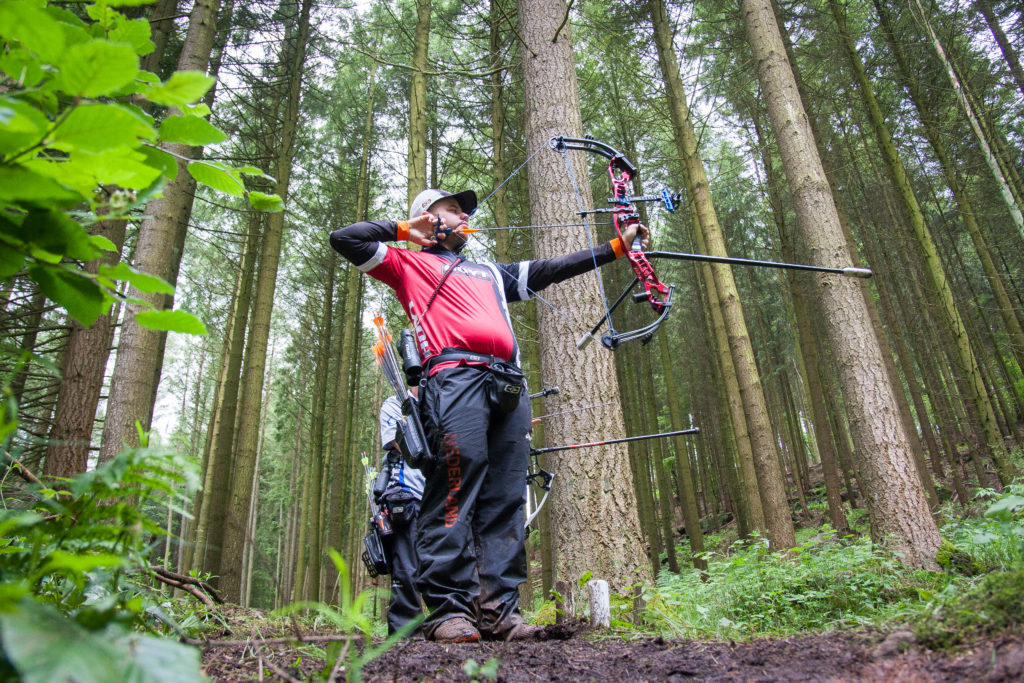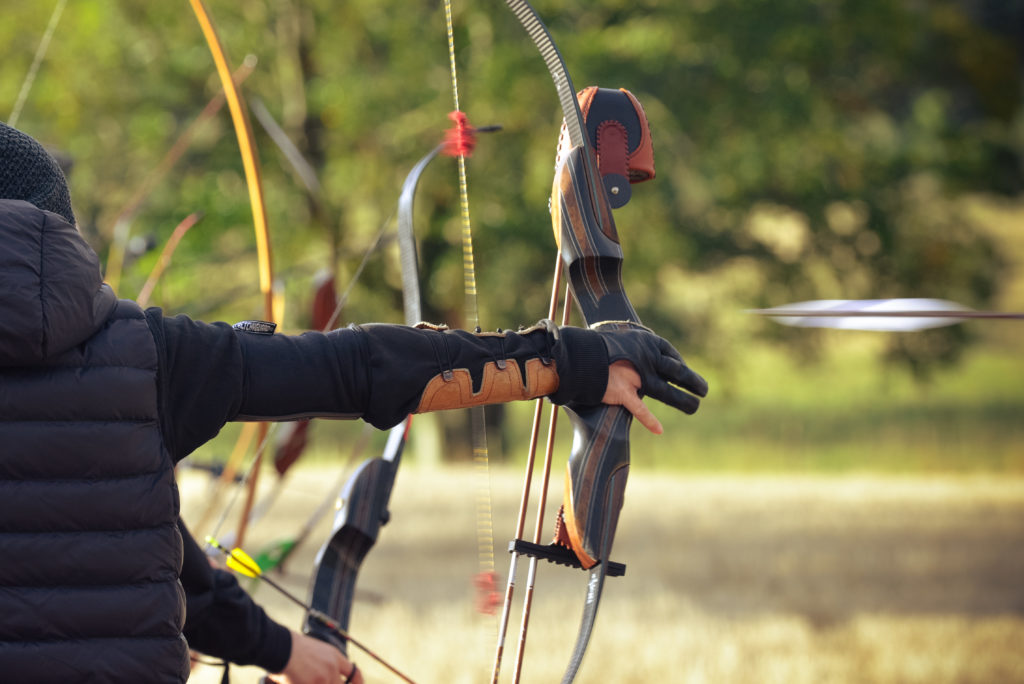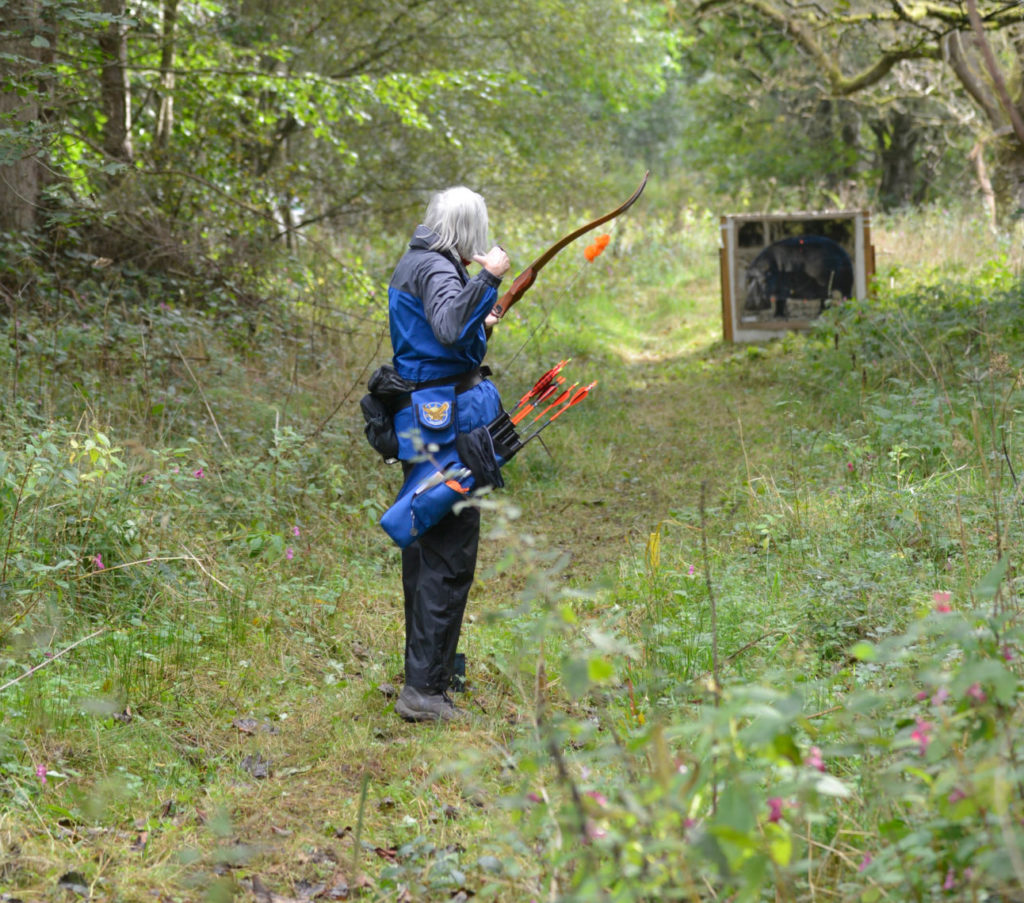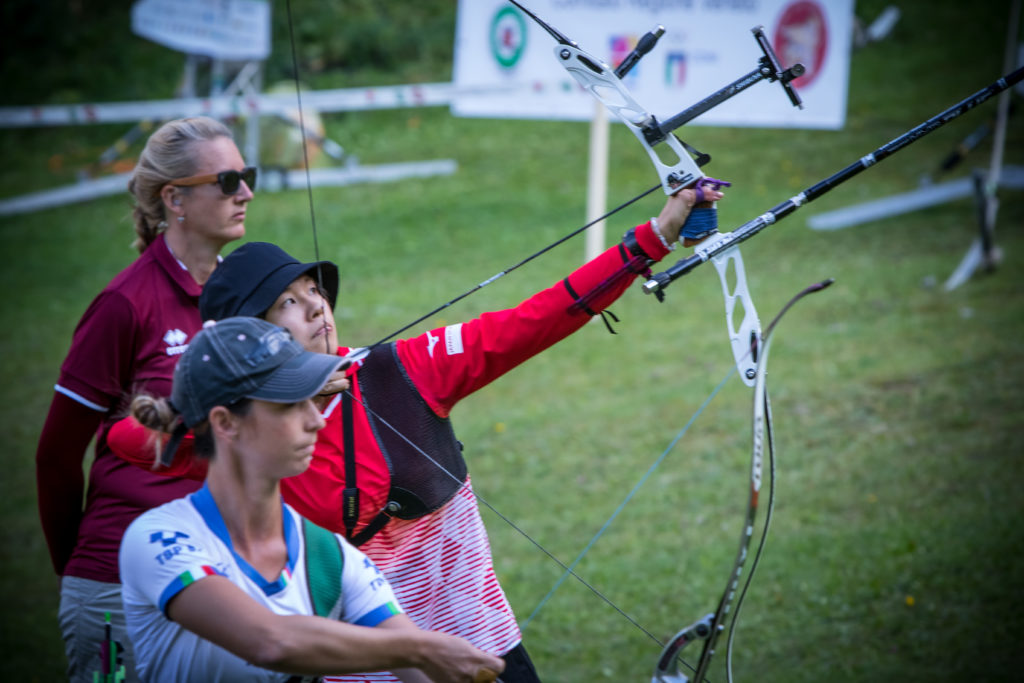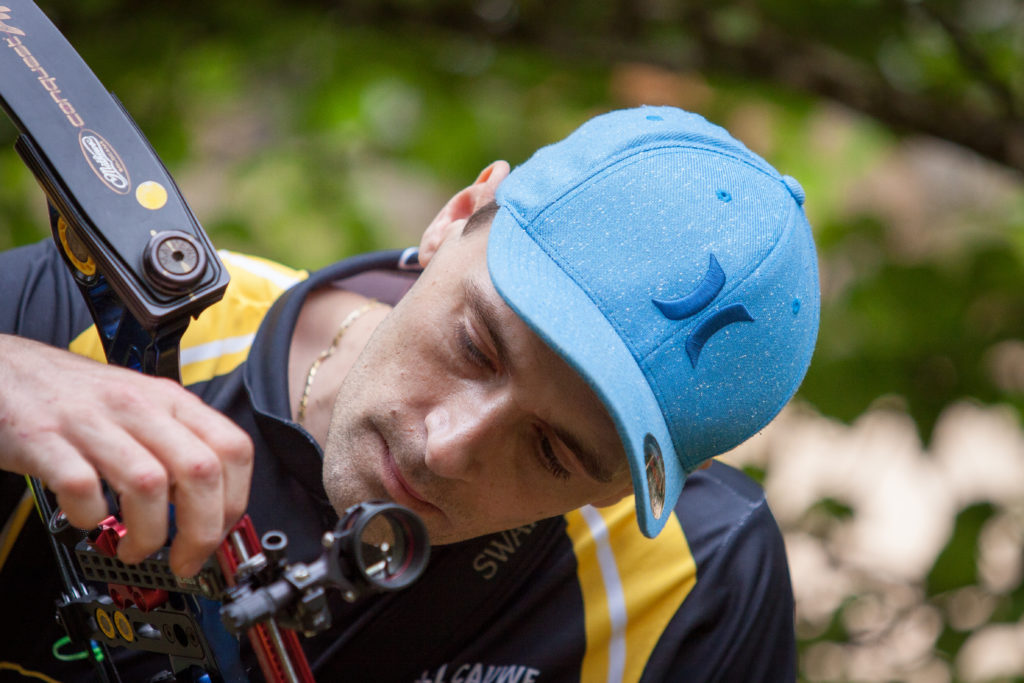Try it this winter, with Andrew Smith
For many target archers, shooting indoors this winter will still be restricted. With that prospect in mind, it’s worth giving field archery a go if you have never tried it. Field archery is enormous fun and great for families, as adults and juniors can shoot together on the same targets. It’s also Covid-safe – or at least much safer than heading indoors, in a coronavirus climate that remains uncertain.
The skills crossover is seamless and you can use your existing equipment. Shooting on uneven ground, up and down hill, will improve your posture, form and understanding of the effects of light on your aiming and string picture, all of which will be of benefit on the target shooting line. Field archery will broaden your archery horizons, giving you a better understanding as to what makes up a good shot and providing you with more outdoor options all year round.
First, you need to find and join your local or preferred club. In the UK there are dozens of clubs up and down the country, many with 24/7 field courses.
In the UK, there are two main associations: the National Field Archery Association and the English Field Archery Association (which use both paper and 3D targets). Archery GB and World Archery also offer field archery (World Archery field-specific target faces), so you can even organise a shoot within your club.
Unfortunately, a complex history means that your Archery GB membership is not valid with either of the dedicated field archery associations. To shoot you will also need to join the relevant association and your preferred club.
Before you will be let loose on the field course you will have to complete a short beginner’s assessment which covers safety, the rounds, scoring and to confirm your competence in shooting a bow. As with all shooting sports, safety is paramount and archery has an excellent track record, so always follow to the letter the safety rules before you start shooting and always keep to the marked paths around the course.
Clothing
You will be walking around woods and fields, some of the terrain will be muddy and slippery so good solid waterproof boots are first on the list. In winter it is likely to be wet for most of the day so appropriate clothing should be worn that will not interfere with your shooting.
Unlike target, you will be constantly moving from target to target, so you need to carry all your equipment, spares, snacks, and drinks with you. There are several lightweight archery specific backpacks that are suitable, some have an integrated folding stool.
Equipment
Both the NFAS and EFAA recognise a wider range of bow styles (13 in EFAA and 11 in NFAS) and accessories not allowed in target archery, so it is a great opportunity to add variety to your shooting and try a different bow style, such as horsebows, American flatbows. hybrids, primitive bows and/or specific one-piece and takedown field bows. Many field archers shoot multiple styles.
In the meantime, your current target bow and accessories will be perfectly adequate for outdoor use. Perhaps the most sensible option is to buy some low-cost arrows, accepting that, initially at least, you might lose some in the undergrowth.
Your sight pin and string colour are items that you might need to change unless you currently use a sight pin with a bright pin (such as the well-known Beiter Flo pin). Even on a sunny day you will be shooting in dark areas and a black sight pin will disappear, as will a black or dark string, personally I use a Beiter sight tunnel in white along with a white or yellow string.
Knowing where your last arrow landed and being able to see it without binoculars is a help, some nocks are easier to see than others – black, white, or yellow are not the best choices and it is much better if all the archers on a target have different colours, so you do not confuse another archer’s arrow for yours.
Finally, a good pair of binoculars can be helpful (on the courses that permit them) – by good, I mean they give a bright image rather than a high magnification, as some targets will be in the shade and hard to see.
Sight marks
Field courses are either marked or unmarked. With a marked course you know the distance to the target, unmarked you don’t – and some competitions combine the two.
This is where many target archers come unstuck, the main reason is a lack of attention to detail. Getting accurate sight marks is not something you just pop out for on an afternoon on your target field the day before a shoot as all this will give you is a rough guide and reduce arrow losses.
Once on a field course you will start to appreciate the amount of adjustment required for each shot, including allowing for sloping fields and up and down shots. There are no short cuts, and many points can be lost if your first arrow does not hit the mark. It is also a great idea to make notes as you go around the course. Details like day, date, weather, type of shooting terrain, adjustments to form and how much you had to move your sight can help you to understand why you did not hit the middle or kill zone on a 3D.
If you are planning to use a sight it is important that you have sight marks for all distances from 5m to 60m and five yards to at least 80 yards. When getting these, put your target on the floor, not on a stand at target height. If you get all your sight marks at the normal target archery height you may find your arrows landing a bit high. Field archery is almost never on a level field or flat foot position, and it is easy to be fooled into canting your bow causing wild left or right shots when lining up with the target boss.
Assessing the shot
In field archery you shoot from pegs, the distance to the target depends on your bow style, category and age.
Before you shoot you need to assess the shot – how far is it, does it slope left or right are there any potential obstructions and adjust your aim accordingly. Most importantly decide whether it is safe to shoot, especially making sure that the previous group are clear of the target and not hidden behind the target looking for arrows.
If it is an unmarked shot, work out what you think the distance may be, allowing for shooting up or down hills and across gullies. Look at the holes in the target face from previous archers to see if there is a pattern, like high shots or drifting left or right – mistakes that you can learn from and correct.
If it is a 3D or paper face target, know where the kill zone is for each animal, it may not be where you think it should be. Also be aware of the rules with regards to how far a target face of a given size can be placed, as course designers on an unmarked course will mix up target faces and boss sizes to try and fool you as to the size of the face and making the distance estimation harder. This is very much part of the fun of field and 3D shooting, and even the best are fooled sometimes.
Unmarked distances
For some, how they do it is a closely guarded secret and there are many systems, including using clues in the terrain, such as looking at regular gaps between fence or telegraph poles. The size of your sight pin in relation to the target face can also help. The more you shoot, the easier it becomes. Remember, uphill shots tend to land short and vice versa.
When estimating distances I use the cricket ball method. Previously, I have thrown underarm a cricket ball (a bit like playing boule) and then after a few throws when the length seems consistent, I measure the distance thrown in metric and imperial.
I take some time learning how big the gap is and then test it in everyday life when walking to the shops etc. When on the peg I imagine how many throws it will take to the target and multiply this by the distance I threw the ball, I also look at the terrain and other clues to confirm my guesstimate.
Setting up the shot
These days it is safer to set your body alignment first and draw on the target rather than drawing up high and then bending at the waist which requires more strength and reduces the chance of launching an arrow high in the air. You will also notice that shooting uphill will shorten your draw and downhill will lengthen it.
In any event good execution of the shot is always crucial to good accurate arrow flight and useful feedback.
Competing
For some the fun of shooting is enough, but for those with a competitive streak you will find NFAS and EFAA open and club competitions being run on a weekly basis and there are opportunities to add achievement badges to your quiver.
With European and world travel starting to open up again, the EFAA membership also includes membership to the IFAA International Field Archery Association and access to dedicated field vlubs all over the world and an active competition schedule, especially across the channel. For those that really get the competitive bug and achieve the relevant scores there is the chance to represent your country, too.
Useful contacts
For more information:
English Field Archery Association
Range of Membership options
Individual starts at £25 pa
National Field Archery Association
Range of Membership options
Individual starts at £20 pa
Archery GB
www.archerygb.org also has many details about WA style field archery


